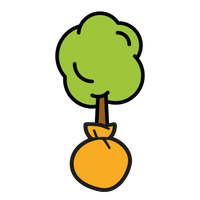When should I plant Himalayan Cotoneaster hedging?
The best time to plant Himalayan Cotoneaster is throughout autumn, when the temperature is a little cooler.
How far apart do you plant Himalayan Cotoneaster plants?
For the best results, we recommend planting around 3-4 plants per metre.
How to plant Himalayan Cotoneaster:
Begin by digging a hole that is twice as wide and deep as the plant's root ball. Save the soil to use as backfill, but remove any weeds or rocks.
Try to break up any densely matted roots before placing into the hole; your Cotoneaster plants should be planted at ground level.
Once planted, backfill the hole with the excess soil and amend with peat moss or compost. After this, thoroughly water the plant (you will need to water 2 or 3 times each week for the first year after planting). Ensure you spread a decent layer of mulch around the base of the plants, too, to help supress any weeds - this mulch will also help the plant to survive in very cold conditions, as it helps retain any warmth and moisture that remains in the soil.











